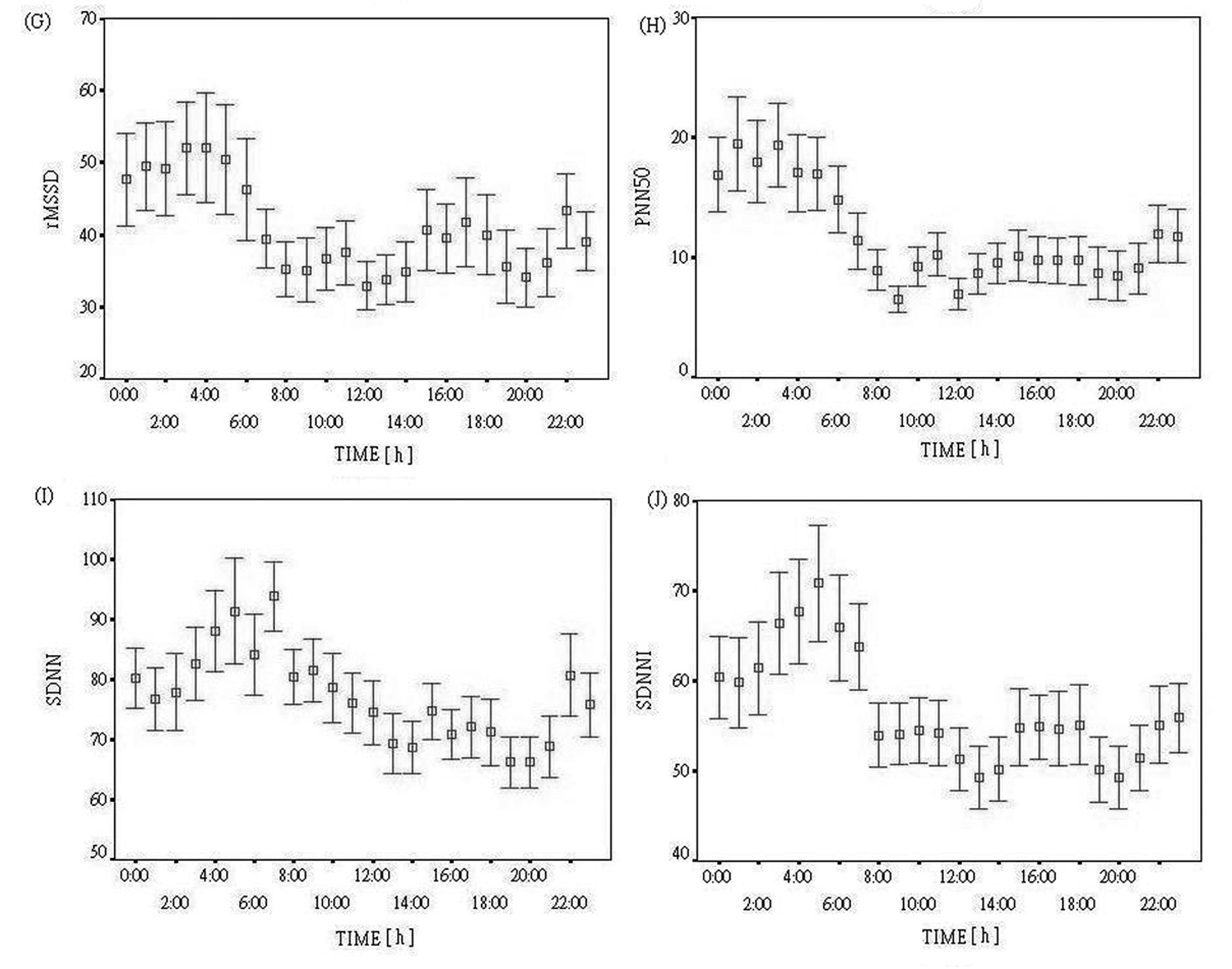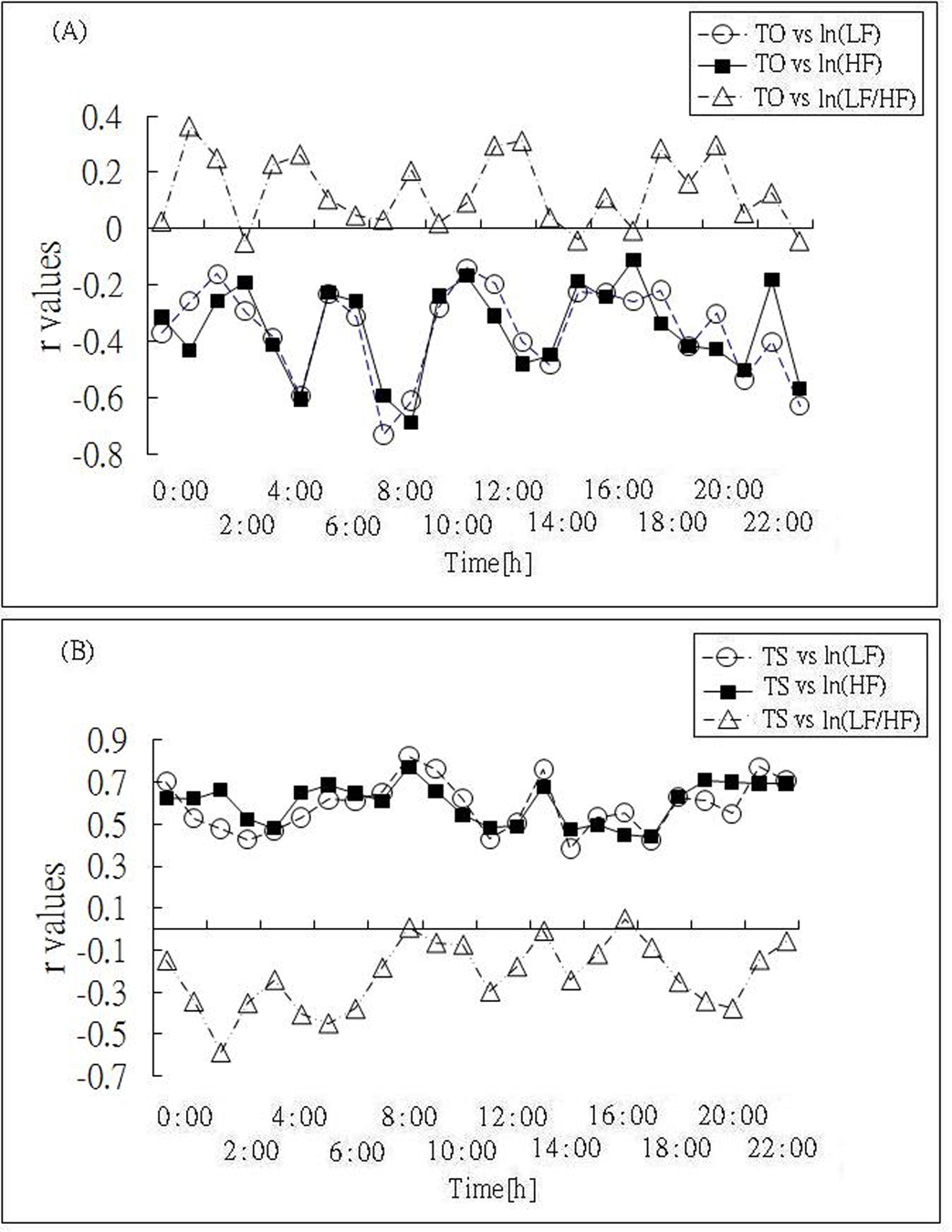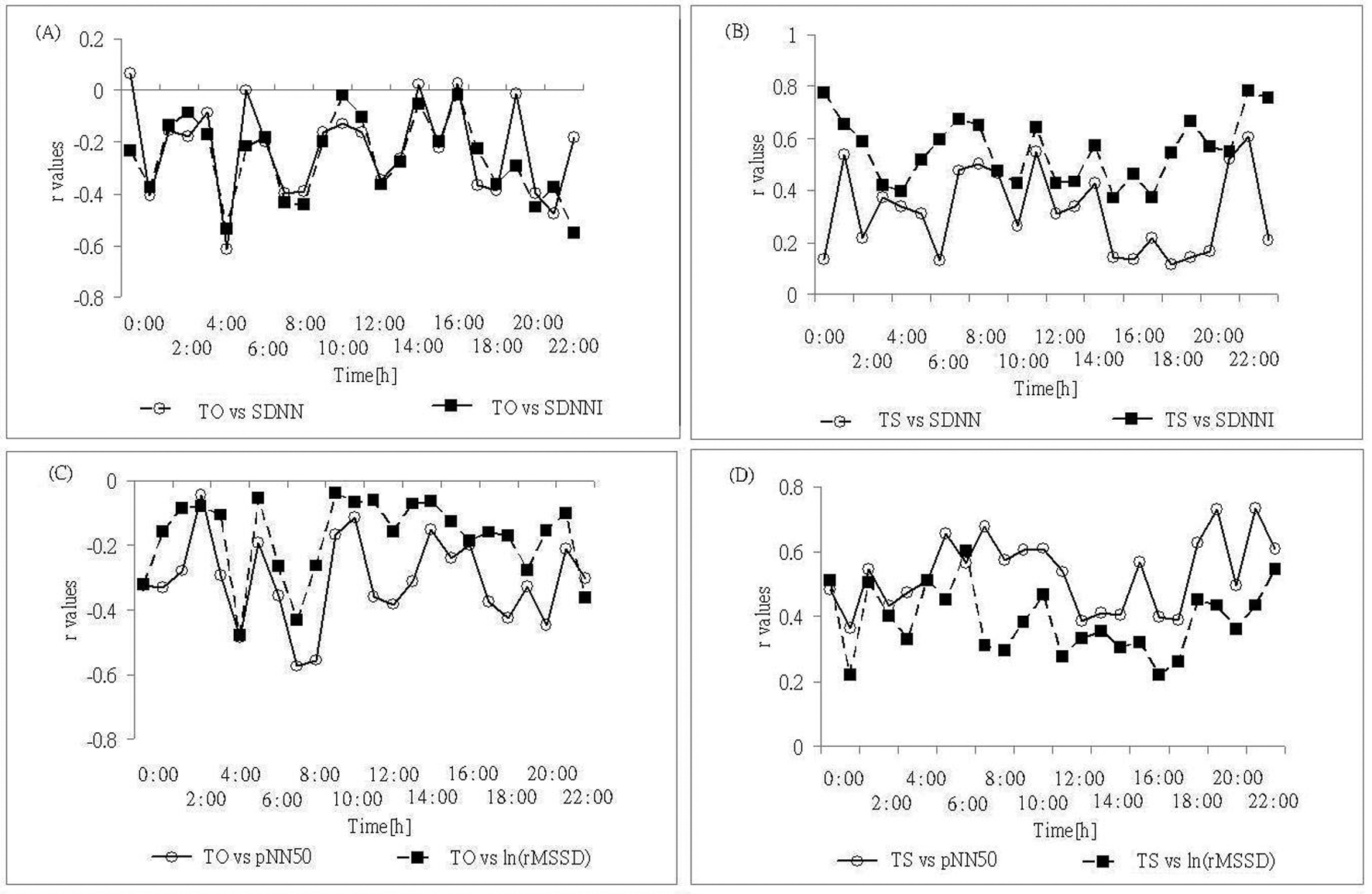

Figure 1. Hour-to-hour circadian variation (mean ± SD) of heart rate turbulence (HRT) and heart rate variability (HRV) parameters. (A) Turbulence onset (TO), (B) turbulence slope (TS), (C) low frequency (LF), (D) high frequency (HF), (E) low frequency/high frequency (LF/HF), (F) very low frequency (VLF), (G) square root of the mean of the sum of squares of differences between adjacent NN intervals (rMSSD), (H) percentage of absolute differences between successive normal RR intervals that exceed 50 msec (pNN50), (I) standard deviation of normal RR interval (SDNN), and (J) mean of the SD of all RR intervals for all five minute segments (SDNNI).

